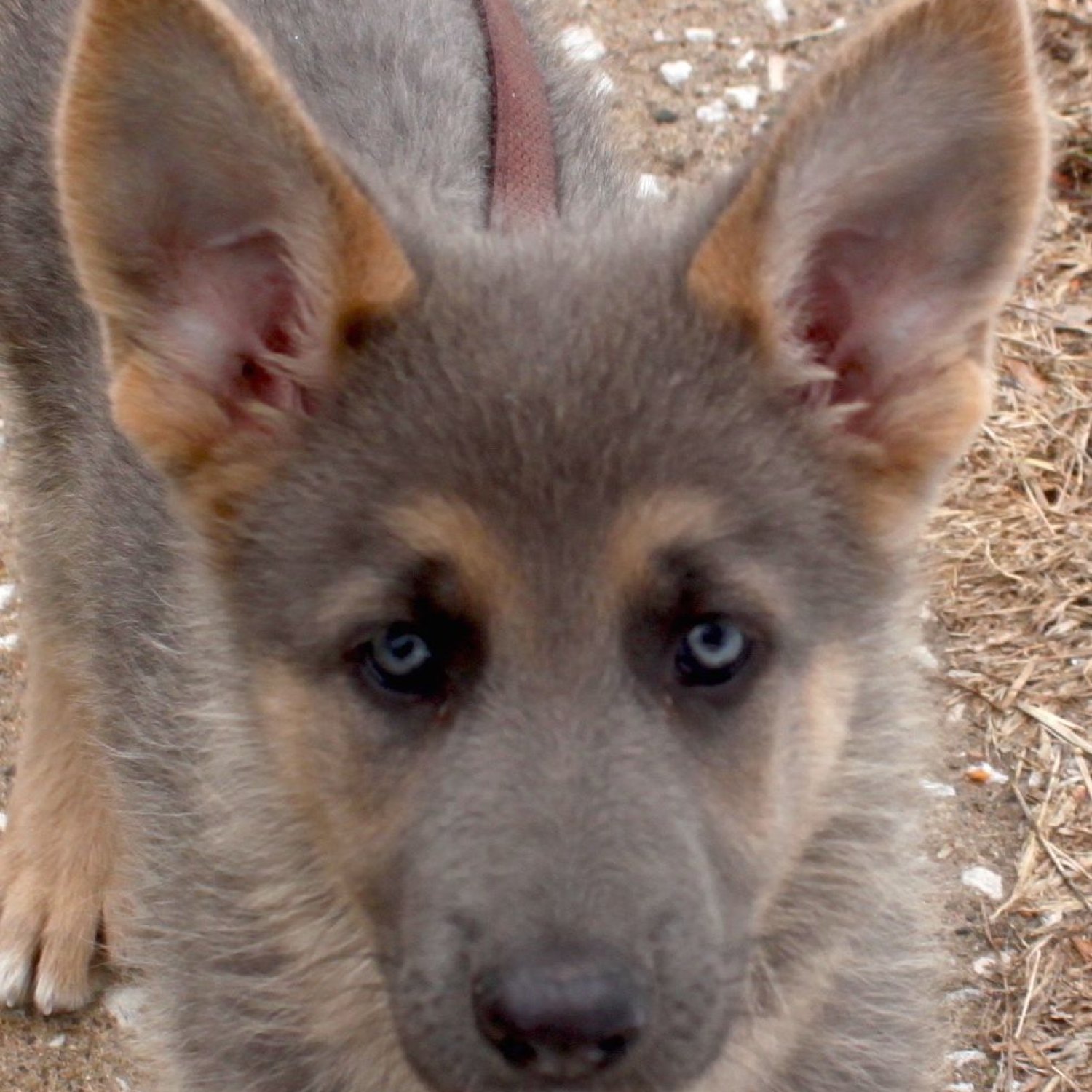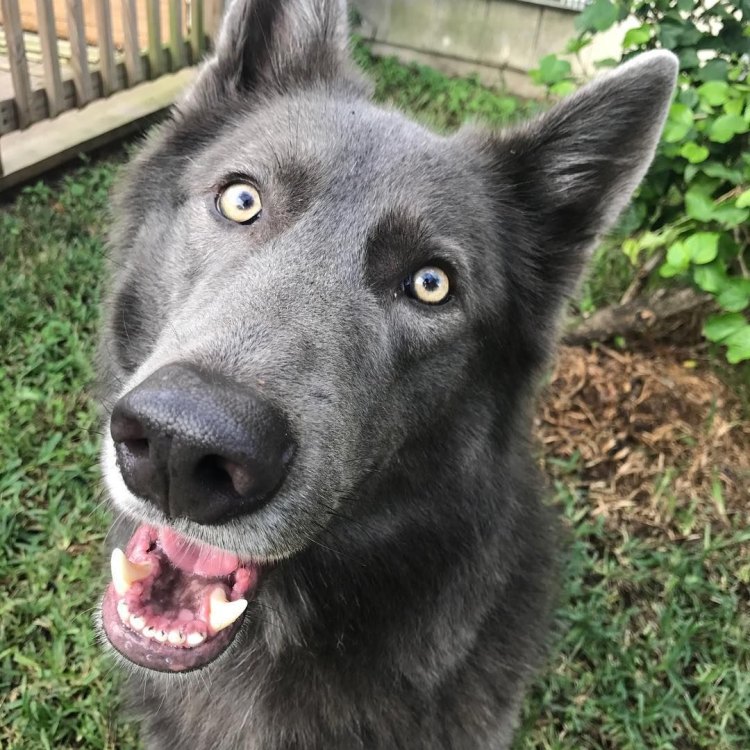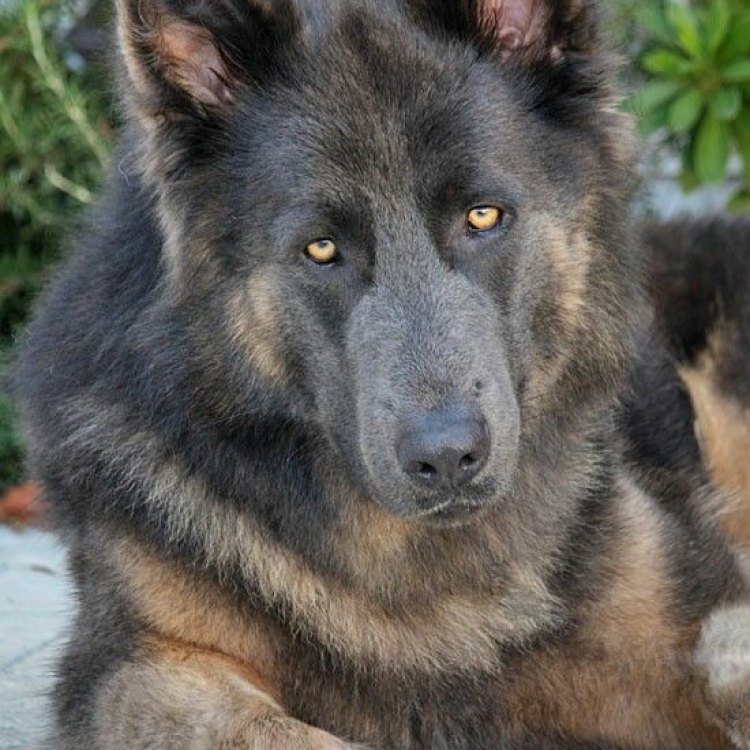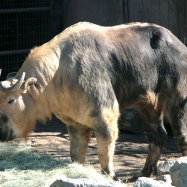
Blue German Shepherd
22-26 inches
Meet the unique and intelligent Blue German Shepherd! Standing at 22-26 inches tall, this medium to large-sized dog is a loyal working dog and a loving companion. Part of the Canidae family, they are primarily kept for their agility and protective nature. They make great additions to any family and are a popular choice for active individuals. Find your new furry friend today! #BlueGermanShepherd #WorkingDog #FamilyPet #Canidae
Animal Details Summary:
Common Name: Blue German Shepherd
Kingdom: Animalia
Habitat: Various habitats - can adapt well to different environments
The Majestic Blue German Shepherd: A Unique Breed with a Fascinating History
When you hear the words "German Shepherd," what comes to mind? Most likely, you envision a loyal and intelligent dog with a striking black and tan coat. But did you know that there is a variant of this breed that sports a stunning blue coat? Yes, you read that right – the Blue German Shepherd, also known as the Blue Sable German Shepherd, is a rare but remarkable breed that is gaining popularity among dog enthusiasts.But what makes the Blue German Shepherd so unique? To fully appreciate this exceptional breed, we need to delve into its scientific name, habitat, feeding habits, physical attributes, and history.
Scientific Classification
The Blue German Shepherd's scientific name is Canis lupus familiaris, which means the domesticated dog subspecies of the grey wolf Blue German Shepherd. Its classification puts it in the Animalia kingdom, Chordata phylum, Mammalia class, Carnivora order, and Canidae family. This classification proves that despite its unique coat color, the Blue German Shepherd is still very much a canine, just like its traditional black and tan counterparts.Habitat and Adaptability
The Blue German Shepherd can thrive in various habitats, given its adaptable nature. Whether it's a suburban home with a large backyard or a rural farm, this breed can quickly adapt to its environment. In the wild, their ancestors, the grey wolves, roamed the forests and open grasslands, making them highly resilient and adaptable.This adaptability is one of the reasons why the Blue German Shepherd is popular among working dogs and families. Some of their jobs include police and military work, search and rescue, and therapy and service dogs. This breed's intelligence, agility, and loyalty make them the perfect candidate for such roles.
Feeding Habits
Like its fellow canines, the Blue German Shepherd is a carnivore, which means they require a meat-based diet Barinasuchus. Their diet should consist of high-quality dog food, along with some raw or cooked meats and healthy vegetables.It's essential to note that the Blue German Shepherd can be prone to food allergies, so it's crucial to monitor their diet and ensure they don't consume any harmful ingredients. A healthy and balanced diet plays a vital role in maintaining this breed's stunning coat and overall well-being.
Physical Attributes
The Blue German Shepherd is a medium to large-sized breed, with an average length of 22-26 inches and a weight of 50-90 pounds. Their body shape is muscular and athletic, designed to excel in physical activities.What sets them apart from the traditional German Shepherd is their unique blue coat color, often with a black overlay. This coat color can range from a light steel blue to a deep slate blue, making them stand out in a crowd. Their coat is usually thick, double-layered, and water-resistant, making them well-equipped for different weather conditions.
Fascinating History
The history of the Blue German Shepherd can be traced back to its country of origin, Germany. The first recorded instance of a blue German Shepherd was in the 1930s, when a litter of puppies from black and tan parents was born with a different coat color. At that time, the blue variation was not accepted by the breed standards, and the puppies were considered undesirable.But this did not stop some breeders from admiring the unique coat color and continuing to breed blue German Shepherds. In the 1960s, the blue German Shepherd gained recognition in Germany, and breeders started working towards establishing the blue variation as a purebred. In 1978, a male blue German Shepherd named Elliot von Rheinhalle was bred with a traditional black and tan female, and their offspring became the foundation of the blue German Shepherd variety we know today.
Popularity Today
Today, the Blue German Shepherd is recognized as a legitimate color variation of the traditional German Shepherd by the American Kennel Club and other major kennel clubs worldwide. As mentioned earlier, the breed is gaining popularity, but still, remains a rare find compared to the traditional colors.Owners of Blue German Shepherds rave about their breed's exceptional qualities, including their intelligence, loyalty, and protective instincts. With proper training and socialization, they make excellent family pets, especially for active households. It's worth noting that this breed requires a lot of mental and physical stimulation, so they are not ideal for apartment living.
Care and Grooming
The Blue German Shepherd requires regular grooming to maintain its beautiful coat. Brushing at least once a week is recommended to prevent matting and remove any dead hair or debris. These dogs have a thick undercoat that sheds seasonally, so they may require more brushing during those times.As with all dogs, it's crucial to practice good dental hygiene with Blue German Shepherds. Regular teeth brushing, along with annual dental checkups, can prevent potential dental issues.
Additionally, regular exercise and training are necessary to keep these dogs physically and mentally healthy. They thrive best in an active environment, so daily walks and playtime are essential for their well-being.
Final Thoughts
The Blue German Shepherd is a magnificent breed with a fascinating history, making them more than just a unique coat color. They are intelligent, loyal, and adaptable, with a stunning appearance that sets them apart from other dogs. However, they require dedicated care and training, so potential owners must do thorough research and be ready for the responsibilities that come with this beautiful breed.In conclusion, the Blue German Shepherd is a rare and remarkable breed that deserves more recognition. As the breed continues to grow in popularity, let's hope that they will always be appreciated for their unique qualities and not just their unusual coat color.

Blue German Shepherd
Animal Details Blue German Shepherd - Scientific Name: Canis lupus familiaris
- Category: Animals B
- Scientific Name: Canis lupus familiaris
- Common Name: Blue German Shepherd
- Kingdom: Animalia
- Phylum: Chordata
- Class: Mammalia
- Order: Carnivora
- Family: Canidae
- Habitat: Various habitats - can adapt well to different environments
- Feeding Method: Carnivorous
- Geographical Distribution: Worldwide
- Country of Origin: Germany
- Location: Primarily kept as a working dog and companion
- Animal Coloration: Blue, often with a black overlay
- Body Shape: Medium to large-sized
- Length: 22-26 inches

Blue German Shepherd
- Adult Size: 60-80 pounds
- Average Lifespan: 9-13 years
- Reproduction: Sexual reproduction
- Reproductive Behavior: Breeding season occurs once or twice a year
- Sound or Call: Barks and howls
- Migration Pattern: Non-migratory
- Social Groups: Pack animals
- Behavior: Intelligent, loyal, and protective
- Threats: No specific threats to this breed
- Conservation Status: Not applicable
- Impact on Ecosystem: No significant impact on the ecosystem
- Human Use: Working dog, companion dog, search and rescue, police and military work
- Distinctive Features: Blue coat color, strong and muscular build
- Interesting Facts: The blue coat color in German Shepherds is a result of a recessive gene. Blue German Shepherds are not recognized by major kennel clubs as a separate breed.
- Predator: No natural predators

Canis lupus familiaris
The Unique and Majestic Blue German Shepherd: A Gentle Giant Among Dogs
German Shepherds are one of the most popular and recognizable dog breeds in the world. Known for their intelligence, loyalty, and versatility, these dogs have become a favorite among dog lovers and are widely used in various roles such as working dogs, companion dogs, and even in police and military work.Among the different variations of German Shepherds, one stands out for its distinctive appearance - the Blue German Shepherd. With its striking blue coat and strong muscular build, this breed is a sight to behold, but there is more to them than just their unique appearance PeaceOfAnimals.Com.
Let's take a closer look at this rare and beautiful breed and discover its unique features, behavior, and role in the ecosystem.
The Physical Characteristics of the Blue German Shepherd
The first thing that catches the eye about a Blue German Shepherd is its beautiful blue coat. This is a result of a recessive gene that gives them a unique and eye-catching appearance. The blue color can range from a steel gray to a deep, dark blue, with some dogs having black-tipped fur, giving an almost iridescent effect.In terms of size, Blue German Shepherds are similar to their traditional counterparts, with an average weight of 60-80 pounds and a height of 22-26 inches. They have a strong and muscular build, giving them a regal and imposing presence.
The Unique Reproductive Behavior of Blue German Shepherds
Like all dogs, Blue German Shepherds reproduce through sexual reproduction. However, one interesting fact is that this breed has a breeding season that only occurs once or twice a year. This is a natural behavior that is observed in many wild canines, and it is a way to ensure that the offspring are born in a favorable season when food and resources are abundant Bull And Terrier.The Social Behavior of Blue German Shepherds
Blue German Shepherds, like their ancestors, are pack animals and have a strong bond with their family members. They are known to be extremely loyal and protective of their owners and make great family companions.In the wild, pack animals have a clear hierarchy, with a strong alpha leader in charge. The same can be observed in Blue German Shepherds, as they need a leader in their human family to look up to and follow. This is why proper training and socialization from an early age are crucial for this breed.
The Behavior of Blue German Shepherds: Intelligent, Loyal, and Protective
One of the most endearing qualities of Blue German Shepherds is their intelligence. They are highly adaptable and can quickly learn new tasks and commands, making them great working dogs. They are also highly trainable and excel in activities such as search and rescue, tracking, and even agility courses.In addition to their intelligence, Blue German Shepherds are known for their unwavering loyalty and protective nature. This, combined with their physical strength, makes them excellent guard dogs. However, it is important to remember that proper training is essential to ensure that their protective instincts are controlled and channeled in the right direction.
The Predator-Free Life of Blue German Shepherds
In the wild, natural predators are a constant threat to many animals. However, for Blue German Shepherds, this is not a concern. They are large, strong, and powerful, and their only "predator" may be boredom. This is why it is vital to provide them with enough mental and physical stimulation to keep them happy and content.Blue German Shepherds and Their Impact on the Ecosystem
As domesticated animals, Blue German Shepherds do not have a significant impact on the ecosystem. Unlike their wild cousins, they do not play a role in regulating the natural balance in their environment. However, they do have a positive impact on their families' lives, providing companionship, protection, and love.The Versatility of Blue German Shepherds: Human Use and Interesting Facts
Blue German Shepherds are not just beautiful animals; they are also highly versatile and have been used in various roles throughout history. From their origins in Germany as herding dogs to being trained for search and rescue missions and even serving in the military and police, this breed has proven its worth time and time again.One interesting fact about Blue German Shepherds is that they are not recognized as a separate breed by major kennel clubs, like the American Kennel Club or the United Kennel Club. This is because, according to breed standards, their coat color is not accepted. However, this has not stopped them from being sought after by dog lovers all over the world.
The Future of Blue German Shepherds
Blue German Shepherds are not listed as a separate breed by any major kennel club, nor are they recognized by any breed organization. This means that no specific threats or conservation efforts are in place for this breed. However, as with any dog breed, responsible breeding and ethical ownership are crucial to ensure their well-being and preservation for future generations to enjoy.In conclusion, Blue German Shepherds are a unique and remarkable breed, known for their distinctive appearance and exceptional behavioral traits. Their intelligence, loyalty, and protective nature make them an excellent companion for individuals and families looking for a devoted and loving pet. Though not recognized as a separate breed, these majestic dogs have won the hearts of many and will continue to do so in the years to come.

The Majestic Blue German Shepherd: A Unique Breed with a Fascinating History
Disclaimer: The content provided is for informational purposes only. We cannot guarantee the accuracy of the information on this page 100%. All information provided here may change without prior notice.












